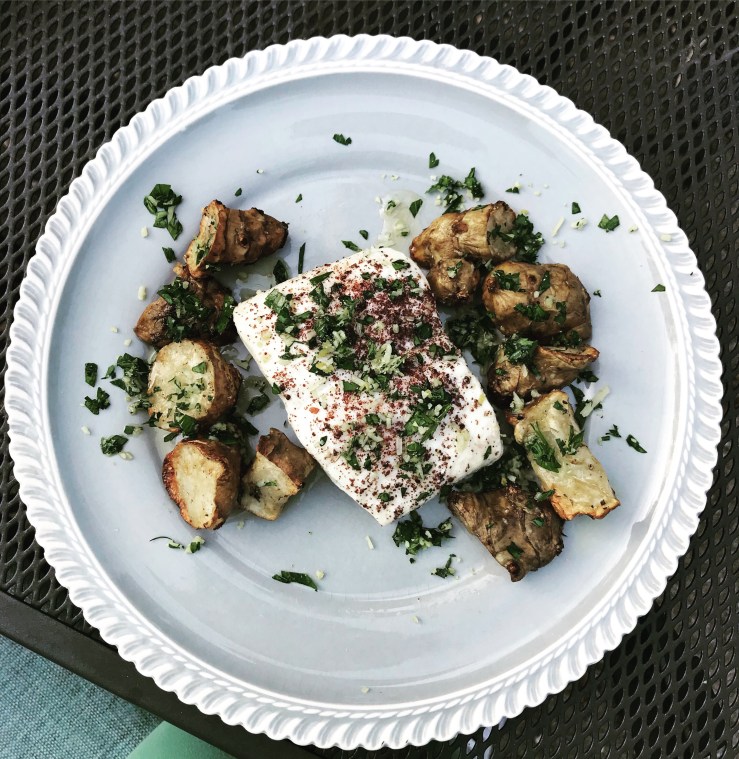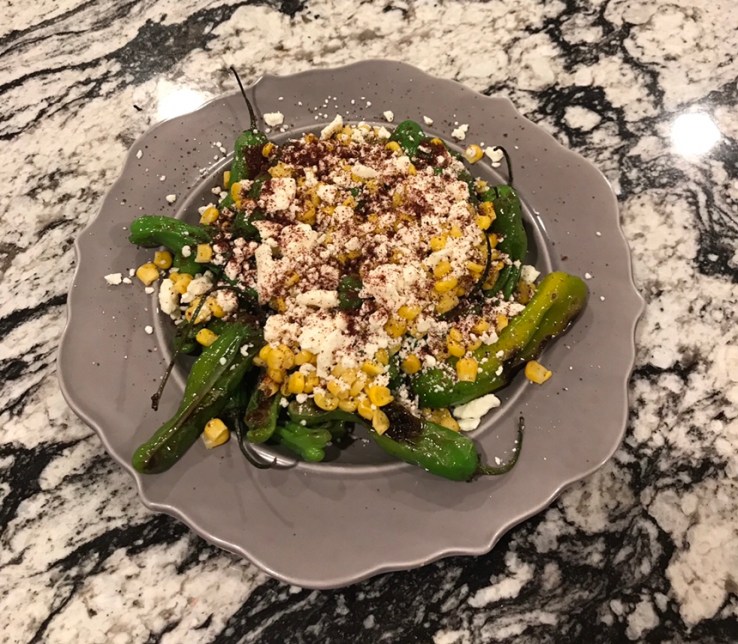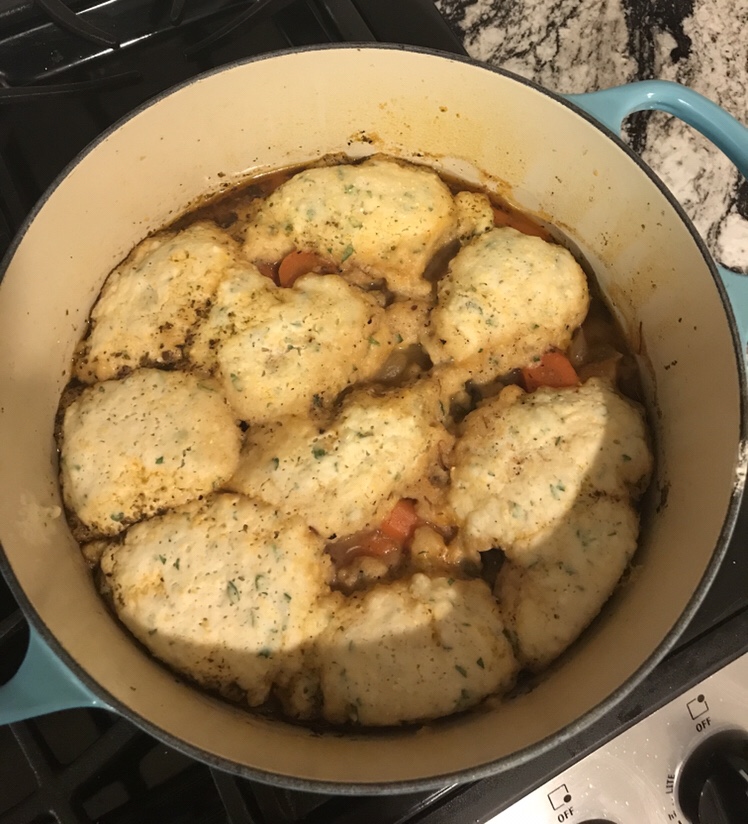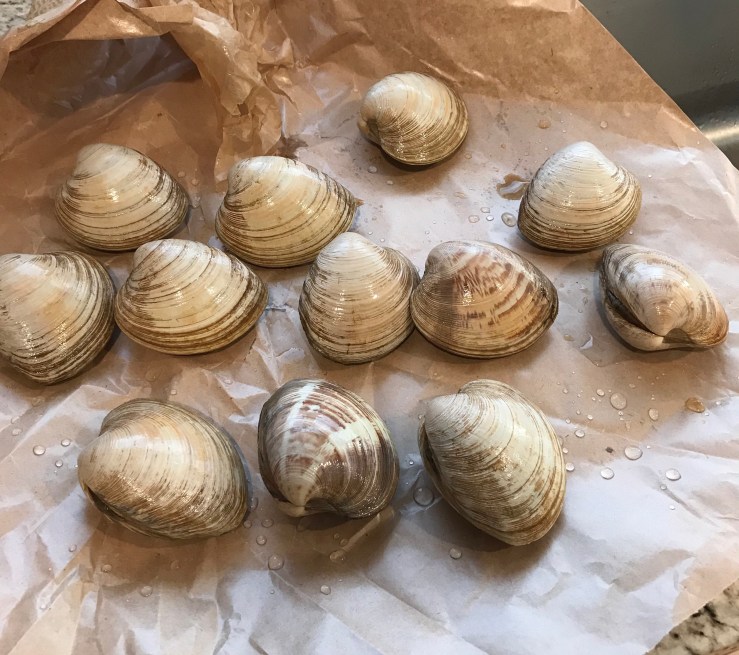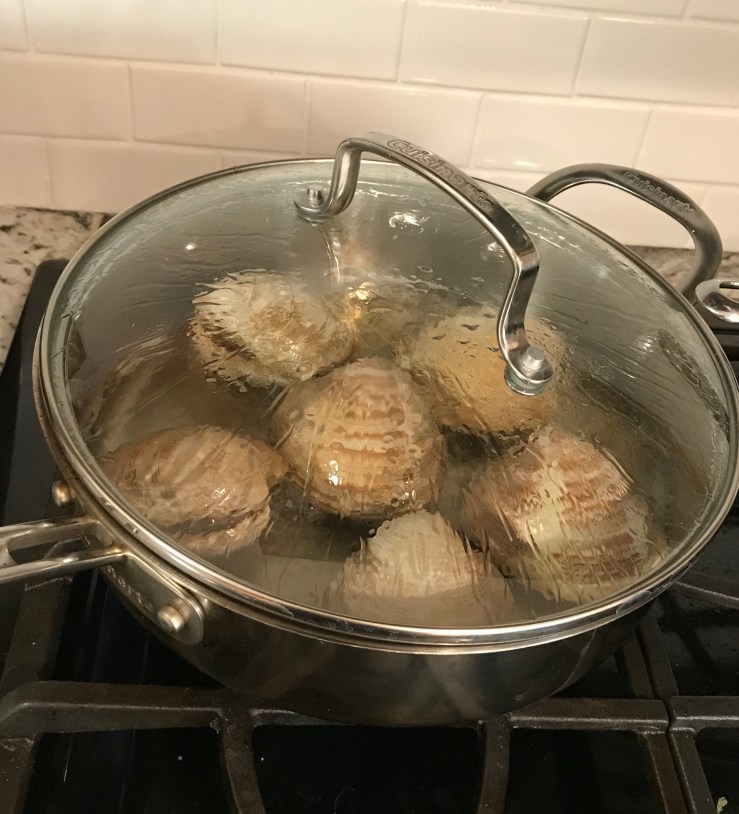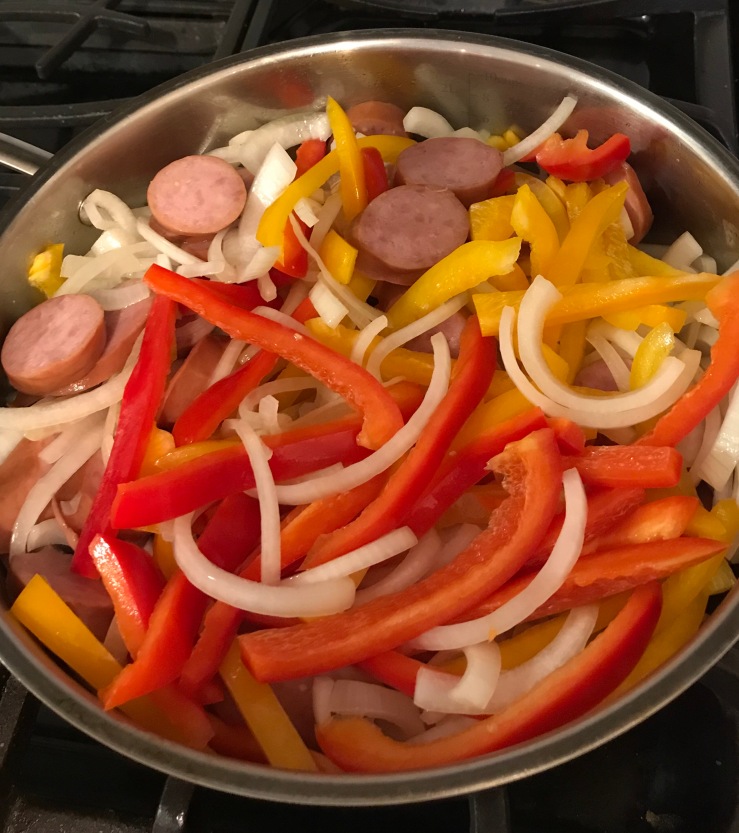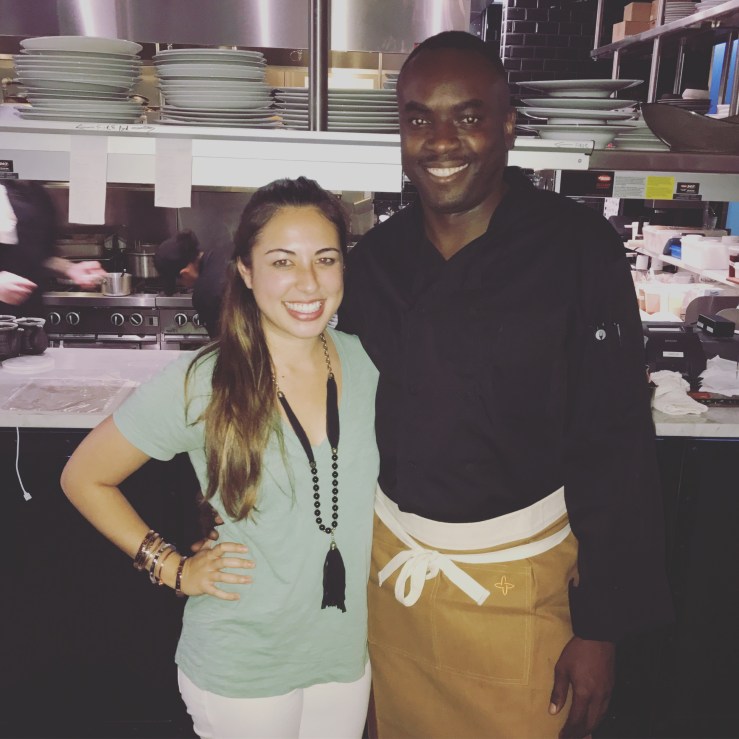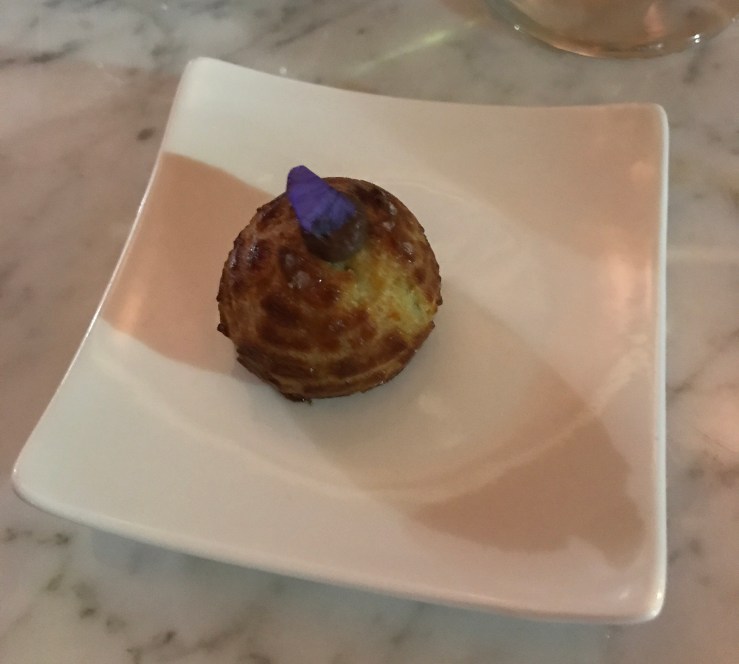
If you watch Chrissy Teigan’s Snapchat as religiously as I do, you know all about the year’s it-restaurant Carbone. Located in both NYC and Vegas, the restaurant feels straight out of the Sinatra and Godfather era, complete with red velvet draping, bourgie chandeliers, low lights, bow tied waiters, and damn good Italian food. Alex and I were in Vegas last December and obvi I had to check it out.
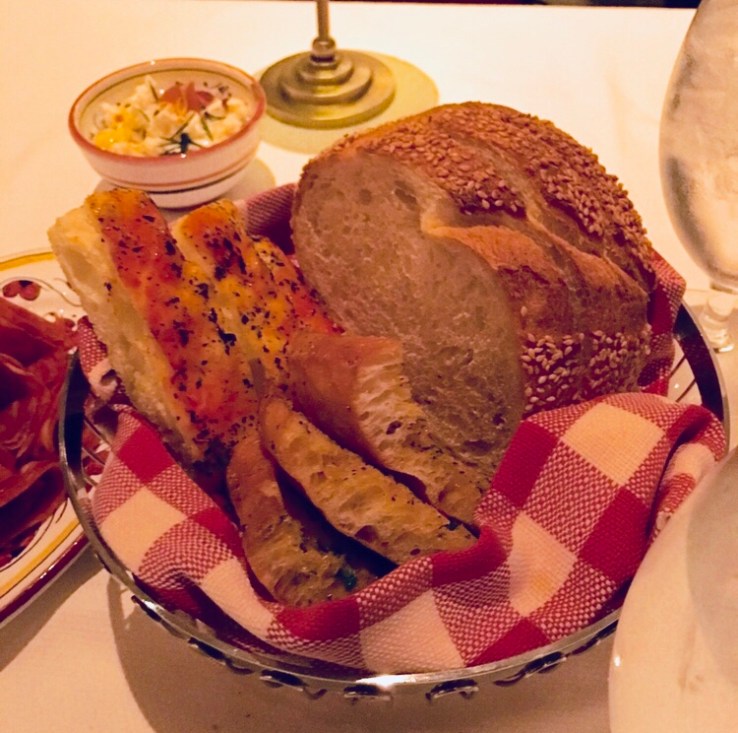
The maitre d’ seated us at a secluded booth, and we had barely put in our drink order before a guy came buy and sliced us a generous hunk of parmigiano-reggiano as an amuse bouche. Any opportunity to eat a hunk of the good stuff should NEVER be passed up. Next they brought our their complimentary antipasti spread. It included cauliflower giardiniera, salami, prosciutto, a couple different kind of cheese, and three kinds of bread. Everything was awesome and went great with the negroni I ordered, but oh man–the tomato bread was our FAVORITE. The waiter ended up bringing us 2 refills of just that. I mean we were probably starved after walking around Vegas all day and guzzling apertifs, but still it was crazy good.


For the pasta course, we ordered pasta alle Vongole and Carbone’s signature spicy rigatoni alle vodka. The pasta with clams was good, but nothing to write home about…sorry not sorry, I dig my version with sourdough bread crumbs more. But the rigatoni, dayyyymn son!! Alex and I are every last bite and wiped up all the sauce with our bread. For such a humble concept, it was a perfectly executed exquisite dish. More on that in a bit.

As a main course, Alex and I shared the cherry pepper ribs. They were ENORMOUS–like, we both could only eat one rib kind of big–but the meat was fall off the bone tender and glazed in a spicy, sweet, and tangy sauce. It took every ounce of self control I had not to pick the rib up and bite into it like a cavewoman. It was served with a light and lemony side salad that balanced out the rich meat.
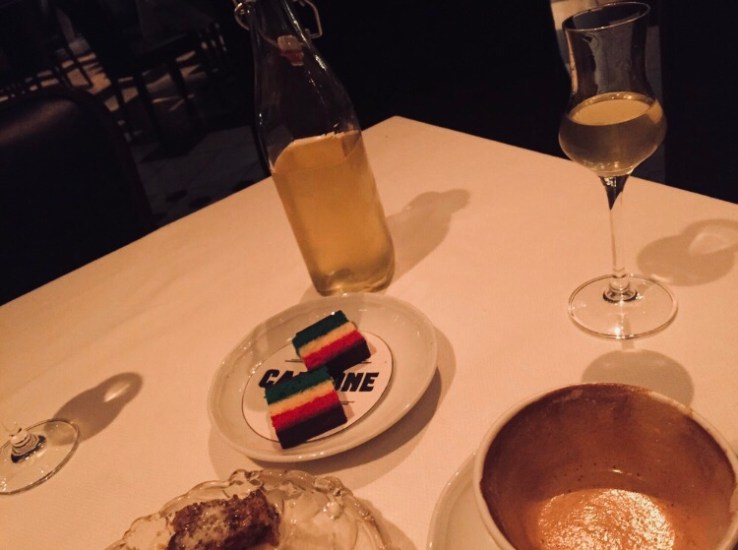
For dessert, they served us complimentary petit fours and an entire bottle of house-made limoncello that Alex and I were too full to even drink one glass of. I thought that was a really cool way to end the meal though, especially if you were on your way to XS or Hakkassan and needed to get a good buzz going. The meal was a splurge, but I felt like we really got our money’s worth with the appetizers, dessert, and last cocktail all baked in. Next time we go back to Vegas, you betcha we’re going back.
But back to dat magical spicy rigatoni. I went right to work replicating this dish, which turned out to be pretty simple. The heat in it is interesting–because of the rich butter and creamy half and half, the spice is a bit delayed and builds as you chow down. Let the simple flavors of tomatoes, crushed red pepper, and aromatics sing and you really can’t go wrong.

Spicy Rigatoni Alla Vodka (Carbone Copy Cat)
You’ll Need
- 1 lb of rigatoni pasta. The dry stuff from the grocery store is cool, but I’m extra AF and used the freshly made kind I got last week at the Boston Public Market. SO good.
- A 28 ounce can of whole peeled San Marzano tomatoes. You there, yeah you, pony up for the good stuff.
- 1 large onion
- 3 cloves of garlic
- 1 teaspoon of crushed red pepper. Yep, the kind you sprinkle over pizza. Use half a teaspoon if you’re a wimp.
- 1 shot of vodka. Ehh, 2 shots so you can drink one while you work. Salud!
- 3 tablespoons of half and half
- 1 tablespoon of butter
- Kosher salt
- Olive oil
- Parmigiano or pecorino cheese. Not the shaker. Grate it fresh like the big kid you are.
Method
- Peel and dice up your onion. Throw it in a large sauté or sauce pan with a few generous glugs of olive oil. Over medium heat, let the onion cook down for about 4-5 minutes. Add the red pepper flakes and peeled whole garlic cloves, give it a good stir, then let the whole thing cook down for another 4-5 minutes. (So the real Carbone makes supposedly makes their sauce with an onion soubise base, but that requires several extra steps that I find unnecessary for a sauce where onions aren’t the star. Take this shortcut, feel good about it.)
- Add the entire can of tomatoes, the shot of vodka, and a couple generous dashes of salt. Vodka…weird right? So what the vodka does is lessen the acidic bite of the tomatoes, making their flavor cleaner, sweeter, and more mild. The butter and cream will have a similar effect to the tomatoes, coming together to make a luscious sexy sauce you’re going to love. (Again, supposedly Carbone doesn’t use vodka in their sauce, but this is a great substitute that mimics the mellow creamy onion soubise step we’re cutting out. Trust!)
- Let the sauce simmer on medium-low for 20-30 minutes.
- Meanwhile, bring a large pasta pot of water to a rolling boil and add several generous dashes of salt. Cook your pasta to al dente, the shortest recommended time. This leaves a nice bite in your pasta, keeping it tasting fresh and pleasantly chewy. Seriously keep your soft noodles Olive Garden, get that ish away from me stat. Drain those bad boys, reserving a splash (1/4 cup ish) of the starchy pasta water it was cooked in.
- Once your sauce has simmered for a good 20-30 minutes, take it off the burner and let it cool for a few minutes. Transfer the sauce to a blender, and add the butter and half and half. Put the lid on the blender, then wrap your hand down with a towel and hold the lid down as you blend your sauce up til it’s smooth. (The hot sauce ups the chance of the lid flying off due to steam build up. Hot tomato sauce all over your kitchen and person = BAD). Taste and add more salt if needed. Splash in a bit of the pasta water if your sauce looks like it needs more liquid.
- Toss the pasta in a big bowl with plenty of sauce. Serve in shallow bowls with fresh grated parmigiano and a drizzle of expensive olive oil on top.
Remix The Dish: Add a sliced chicken breast and plop the pasta onto a bed of wilted spinach for a complete meal. The spicy sauce is a great base and would taste awesome on veggies or fish. I bet it’s divine on those fried chicken cutlets from Whole Foods too!
*Some of these pictures are taken from Google. My iPhone pics didn’t turn out awesome in the low lighting. Deal with it bruh.

